***NEW UPDATES for: “Lost History Found : Croop’s Glen Amusement Park, Hunlock Creek, Pennsylvania”
Since my last post about “Lost History” at Croop’s Glen, an abandoned amusement park located on Route 11 right outside of Nanticoke Pennsylvania, two more people have contacted me to share information about this long abandoned amusement park!

Photo memorabilia donated by Frank Regulski, courtesy of Sheila M. Brandon
Sheila M. Brandon of Sweet Valley, Pennsylvania, used to maintain a history website that contained information about Croop’s Glen and pictures of the Hunlock Creek Train Station. She very graciously sent me pictures and information from her now defunct web site, which covered topics from Lower Luzerne County, to use for this blog.
From Sheila’s information, I’ve learned that the structure that you first encounter when you look over the guard rail and into the park, used to be a ticket booth. It’s interesting to view the changes that have occurred over a relatively short period of time to this structure, thanks to the ravages of time and Mother Nature.

“Ticket Booth” courtesy of Sheila M. Brandon

Again After Recent Flood on September 17, 2011–My own photo
Part of Croop’s Glen’s success was the fact that it was located across the street from the Hunlock Creek Train Station. From the copy used for Sheila’s webpage:
“The rolling thunder of the approaching train was heard as it neared the station at Hunlock Creek, bringing visitors from all over, coming to enjoy a warm summer day at the glen…the sounds of children’s laughter could be heard echoing through the trees.. the warm babbling brook sang ever so sweetly, inviting the visitor to come take a swim.. the smell of popcorn and cotton candy filled the air.. beautiful melodies played under the dance pavilion as the adults danced the night away.”

“Hunlock Creek Train Station” courtesy of Sheila M. Brandon

Hunlock Creek Train Station ruins today courtesy of Ed Mountjoy
“The glen opened in 1908 or 1909, adjacent to the Delaware, Lackawanna & Western Railroad Station. During its earliest years, the park was primarily used for church outings, family reunions and school picnics. In a deed filed at the Luzerne County Courthouse, the parcel of land is described as follows; briefly, a parcel of land containing a two-story frame hotel building (a\k\a- Hunlock Creek Hotel), containing 16 rooms, barn, stone icehouse, dancing pavilion and two refreshment stands. The icehouse, which was located next to the hotel, has been described as the following; it was two stories high, the bottom floor had 3 to 4 feet of sawdust on the floor. Ice was cut from the river and kept all summer in the icehouse. It was still used in the 1920’s.”

Photo of Joseph Virtue in front of Icehouse courtesy of Sheila M. Brandon

Photo of Croop’s Glen postcard donated by Frank Regulski, courtesy of Sheila M. Brandon

Croop’s Glen Amusement Park Map courtesy of Sheila M. Brandon
In addition to the rides, the park had a swimming pool, bathhouses, a penny arcade, two refreshment stands, pony rides and two dance pavilions. The dance pavilion located near the park entrance was elevated so that cars could park underneath it.

Croop’s Victrola Sign courtesy of Sheila M. Brandon
From Sheila’s webpage copy:
“The First of its kind in Northeastern Pennsylvania, afternoon & evening,” would greet visitors as they entered the glen. Famous orchestras from the big band era, including the Dorsey brothers, Fred Waring, and Hugo Winterhalter played there on a regular basis. The park boasted having the first nickelodeon during its first few years of operation. After the glen had closed, in later years the dance pavilion was used as a skating rink until it was destroyed in a devastating fire. All of the modern and expensive equipment was lost in the fire. It was stated that two children sparked the fire one winter after the park had closed.”
The smaller dance pavilion was also used for picnics and contained a coin-operated piano and coin amusement devices. The structure also served as the entrance to the roller coaster.

“Croop’s Coaster View” courtesy of Sheila M. Brandon
The Hunlock Creek Hotel was purchased from the Croop’s by the Hartman family. The website quoted Mary Hartman recalling the following memories of the glen:
“The Hunlock Creek Hotel catered picnics at the glen, including some for the power plant and the Retreat employee picnics. My brother and I took the supplies to the park with our ponies and spring wagon. If I remember correctly, Bess Croop’s family operated the concession stand for several seasons. My best memory of the glen, was one day after school, we discovered the electricity had been left on in the Merry-Go-Round pavilion at the park, and we got the rides running full blast. We had a ball until someone on Falls Hill heard the music.”
The park had something called a “wiggle pole” for the young visitors which was essentially a horizontal, telephone pole sized wooden shaft with one loose end that would wiggle when walked upon.
The webpage cited gas rationing, which was imposed nationally after the bombing of Peal Harbor in 1941, as the reason for visitors no longer visiting the park in the same way that they could in the past. After the park was closed, according to the site, Stanley Croop used the property as a saw mill.

Croop’s Sawmill courtesy of Sheila M. Brandon

Sawmill Remains courtesy of Sheila M. Brandon
Sheila also sent pictures of the park’s rollercoaster. I’m waiting for permission from the Philadelphia Toboggan Company to post the pictures.
Thank you so much for sharing your pictures and information, Sheila!
I’ve forwarded the information from Sheila to The Luzerne County Historical Society and The Plymouth Historical Society. I did not include all of the information or photos about the park in this post. If you want to learn more about Croop’s Glen, you’ll just have to visit one of the historical societies! Sheila also sent information pertaining to the Hunlock Township World War II Veteran’s Memorial.

Miniature replica of Croop’s Glen sign created for a fundraiser to replace World War II Memorial courtesy of Sheila M. Brandon

Croop’s Sign ruins on September 17, 2011–my own photo
A person who graciously wanted to share a first-hand account of her time spent at Croop’s Glen is Lucille Weaver from West Nanticoke. Lucille’s daughter contacted me with the following recollections that her mother has about visiting the amusement park:
“Croop’s Glen was the place to go ‘back then.’ School and/or class picnics were held there, that’s where her class went. There was the Maypole, merry go round, the whip, dance hall, a carousel and others. The Maypole seems to stand out in her memory the most and ‘The Whip” came in second 🙂 The dance hall was alongside of the merry go round or she said, maybe ‘a part’ of it somehow. The carousel had a ‘music box’ that began playing when the carousel started turning…Apparently the ‘Maypole’ was somewhere near the entrance…Since we were talking on the phone, she could not see the ‘now photos‘ of Croop’s Glen, but I described, a long room that reminded me of the inside of a covered bridge and she said that was the dance hall !!! In another photo there was a picnic table and next to that was a long green table (I said to her, I would love to have THAT table!” and mom said it sounded to her like that might have been where they sat & played Bingo. According to mom, when Croop’s Glen was open for business, it was the biggest thing at the time and that is where everyone went. If you grew up there during that time, you KNEW of Croop’s Glen!!!! I really enjoyed listening to my mom talk about Croop’s Glen because it was obvious that was one of her very happy memories when she was growing up. I didn’t know that until today. Instead of our average 45 minute morning phone call, we talked for almost 2 hours! LOL”
Thanks to Lucille and her daughter for sharing such fond memories!
If anyone else has more information that can help to complete the picture about the time spent by one of Luzerne County’s fading generations at Croop’s Glen, please contact me!

Miniature replica of Hunlock Creek Train Station created for a fundraiser to replace World War II Memorial courtesy of Sheila M. Brandon

Hunlock Creek Train Station courtesy of Sheila M. Brandon

Hunlock Creek Train Station ruins (ticket window) today courtesy of Ed Mountjoy
@@@@@@@@
It was Jennifer O’Malia who introduced me to the concept of Urban Exploration
Style Photography in 2010. Jenn, who has the unique vision of a
social documentarian, is now offering her services as a freelance photographer.
Photo by Jennifer O’Malia

Return To
GUERRILLA HISTORY Table of Contents
for more articles about Croop’s Glen

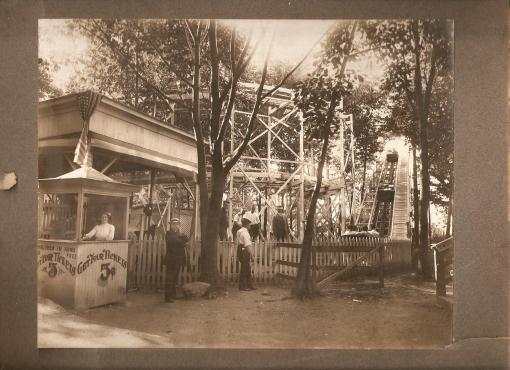

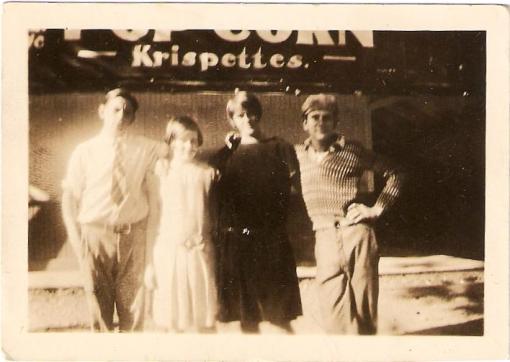

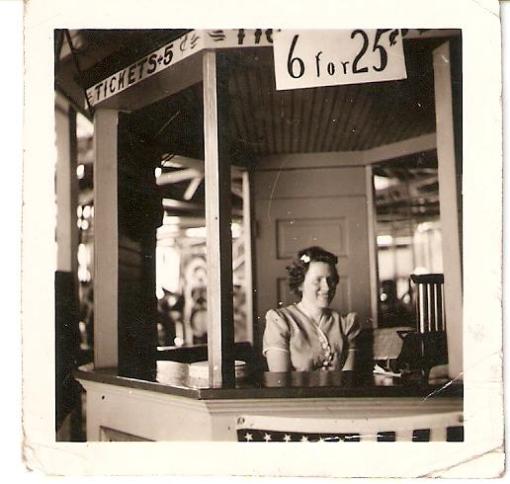
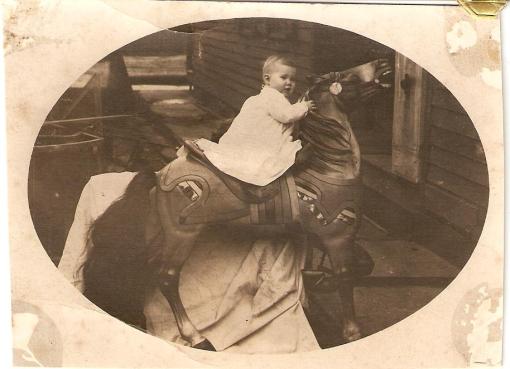
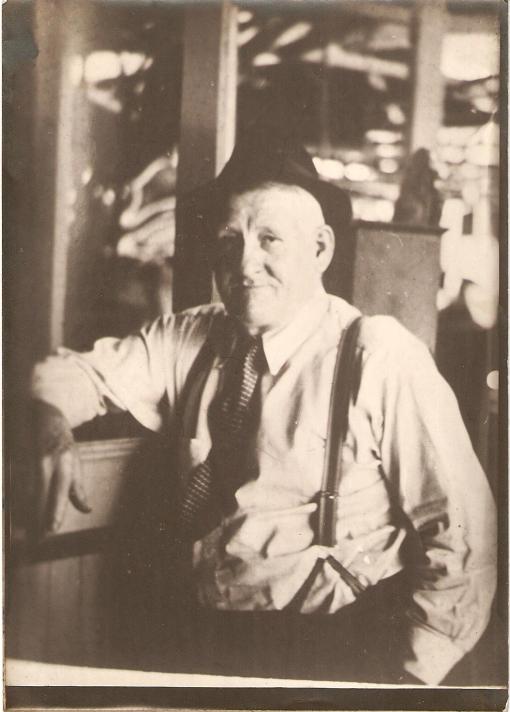
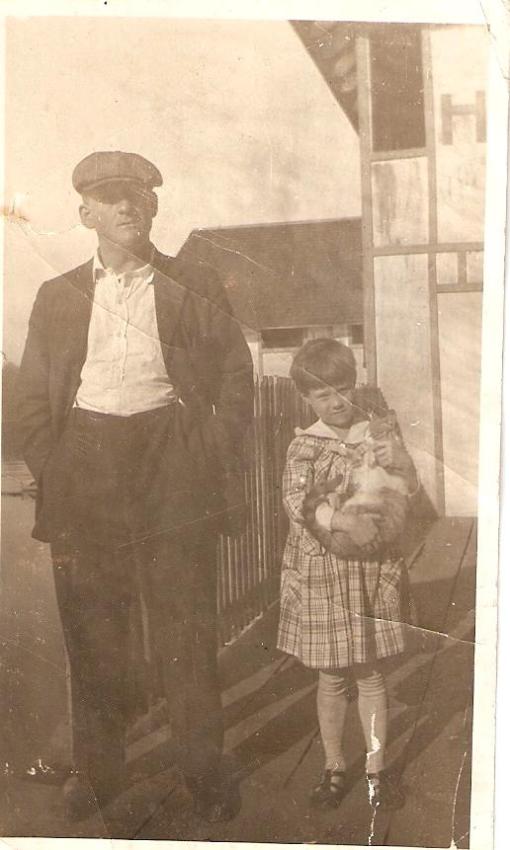
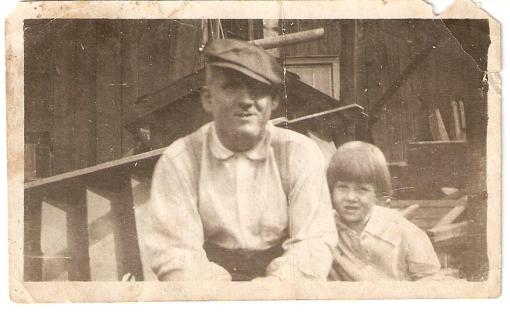
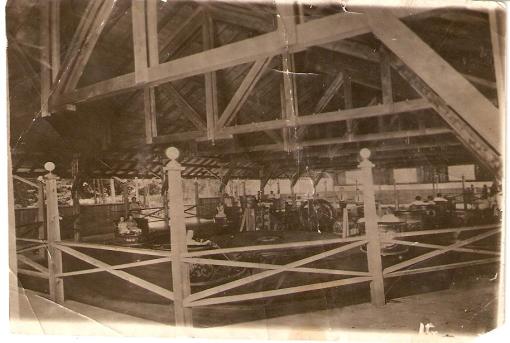
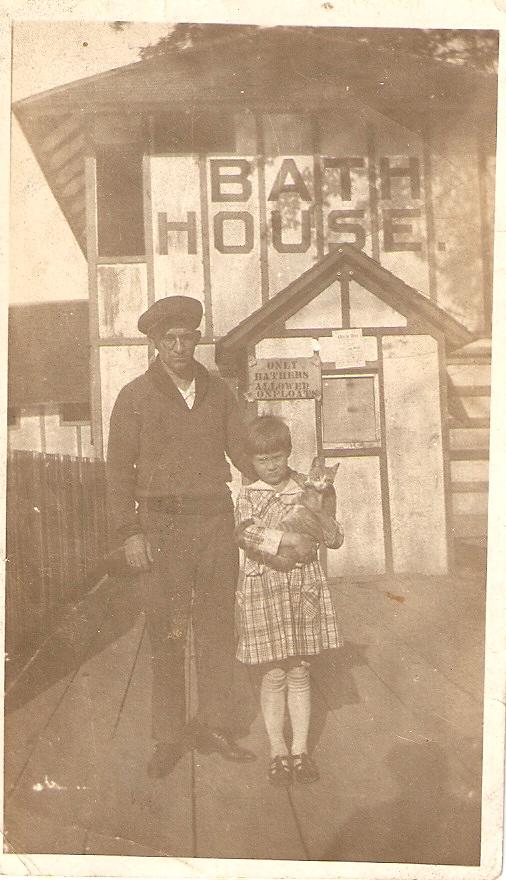

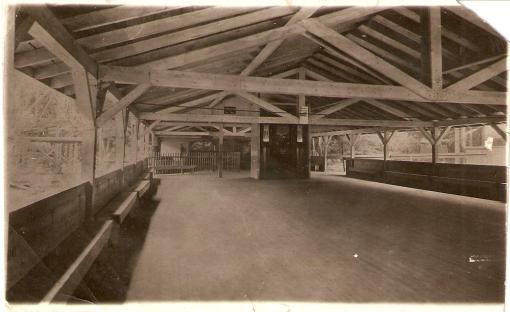
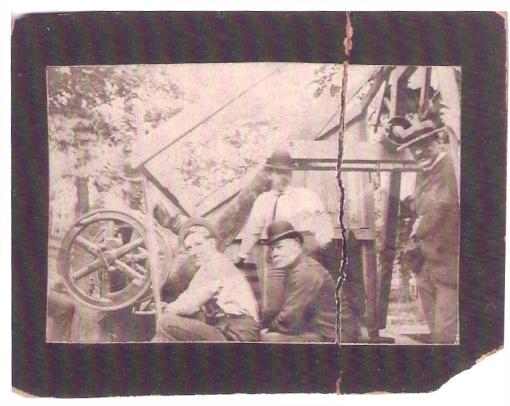












 like the community surrounding it, will constantly continue to change. As it stands now, Angela Park’s once proud Olympic size swimming pool holds trees instead of water, and the parking lot is well on its way to being eventually swallowed by the plants that have forced their way through cracks in the concrete. When humans fail to act, Mother Nature always reclaims her ground with the help of Father Time as he wears away the structural integrity of the objects that people leave behind.
like the community surrounding it, will constantly continue to change. As it stands now, Angela Park’s once proud Olympic size swimming pool holds trees instead of water, and the parking lot is well on its way to being eventually swallowed by the plants that have forced their way through cracks in the concrete. When humans fail to act, Mother Nature always reclaims her ground with the help of Father Time as he wears away the structural integrity of the objects that people leave behind.

 Carousel, Spiral Slide, Scrambler, Ferris Wheel, Antique Cars, Tilt-A-Whirl, The Giant Slide, The Sky Ride, Tea Cups, an assortment of Kiddie Rides, The Swingin’ Gym, four refreshment stands, Porky the Paper Eater (an interactive pig-shaped trash receptacle that vacuumed paper through his mouth and told kids not to litter), several souvenir stands, a stage, an arcade, athletic fields, miniature golf, picnic facilities, and an Olympic size pool with changing facilities, lounge chair and diving boards helped the park earn the title the “Playground of Northeastern Pennsylvania”.
Carousel, Spiral Slide, Scrambler, Ferris Wheel, Antique Cars, Tilt-A-Whirl, The Giant Slide, The Sky Ride, Tea Cups, an assortment of Kiddie Rides, The Swingin’ Gym, four refreshment stands, Porky the Paper Eater (an interactive pig-shaped trash receptacle that vacuumed paper through his mouth and told kids not to litter), several souvenir stands, a stage, an arcade, athletic fields, miniature golf, picnic facilities, and an Olympic size pool with changing facilities, lounge chair and diving boards helped the park earn the title the “Playground of Northeastern Pennsylvania”.



